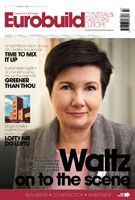After two years in the EU, the Romanian property market is in overdrive. Following the pattern of the CEE countries that went before them, the office, retail and residential sectors are seeing the biggest expansion. But can the industry still keep going at full-pelt in the wake of the financial crisis?The growth of the Romanian real estate market began two years ago when most of the players realized the closing date for membership of the EU meant that everything or almost everything had to change. With new demands, the new competition and new investors were looking at their game and realised things had to be altered. So, the evolution of the Romanian market accelerated and everyone was able to see a new industry emerging. Along with it, new residential, office, retail and warehouse projects were launched. After the pioneers, most of them Romanian, Israeli, Spanish (their market had begun to dry-up) Irish, Turkish and British developers and investors appeared on the market.In 2006 and






























































